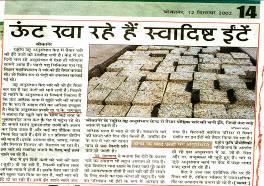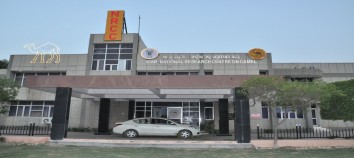CAMEL NUTRITION
- Feeding camels on total mixed ration having 50% groundnut haulms and cluster bean straw was more economical for improving the quality of cluster bean straw.
- Feeding urea treated cluster bean straws found economical but supplememtation with propopis cinereria leaves along with traditional cluster bean straw increased the feeding cost.
- The camel calves can be weaned safely at 4-5 months age which save milk for other purposes.
- The seed local weed lana (Haloxylen Salicornicum) can serve good protein % CP replacing 25% of protein source in concentrate mixture without any adverse effect on health and digestibility on nutrients.
- Developed simple technique for collection of rumen liquor by tocharization of compartment (C1).
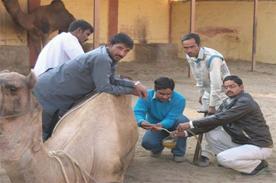
- Area specific mineral mixture (ASMM) was prepared after evaluation of feed, fodder available in the Bikaner region and study of feeding practices. Field trials of ASMM found to improve lactation and reproduction performance of camel.
- Local feed and fodder resources were evaluated for nutritional components.
- Feeding strategy based on complete feeds has devised to attain maturity of camel calves at 3 years.
- Optimum feeding schedule of pregnant camels during last trimester with diets having 9.5% CP and 50% TDN was devised for better calving performance and birth weights of calves born.
- Complete rations as CFBs having combination of available local feed fodder ensured optimum milk production (8-10 l/d) performance.
- Optimum feed intake and reduced body weight loss of breeding male camels during rut season and improved draft performance. (Like Guar phalgati (pods of Cyampsis), gram straw, moth fodder, groundnut haulms, wheat straw, tree/shrub leaves and local concentrates).
- Urea molasses mineral blocks feeding to growing camels found to improve the growth rate and reduced cost of concentrate feeding
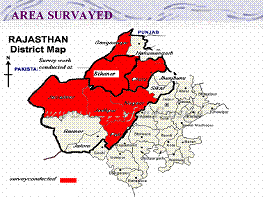
Research achievements
- Analysis of locally available camel feeds and fodders indicated that tree leaves to be better sources of protein (12-31%) followed by bushes/shrubs (11-19%) leguminous crop residues (7-11%) and grasses (7-10%).
- Carrying capacity of rangeland. Grazing behavior and performance of camels in sewan grass pasture and 3-tier silvi-pasture was studied and camel production performance of camels in rangeland was related with the biomass yield.
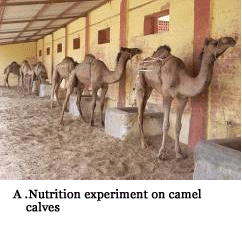

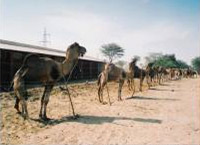
Technology generation and extension activities
- Developed complete feed blocks having higher palatability and digestibility for growing camels, lactating camels, pregnant camels, male breeding camels and draft camels.
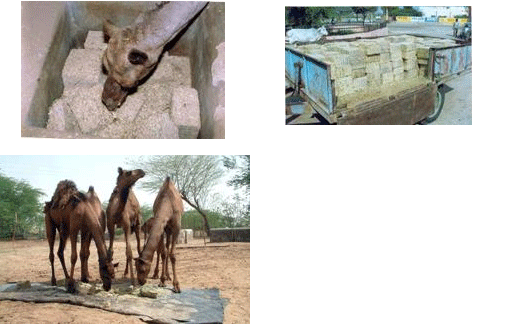
- Exhibitions of complete feed blocks for feeding camels: Five nos.
- Number of farmers engaged in complete feed block field study :249
